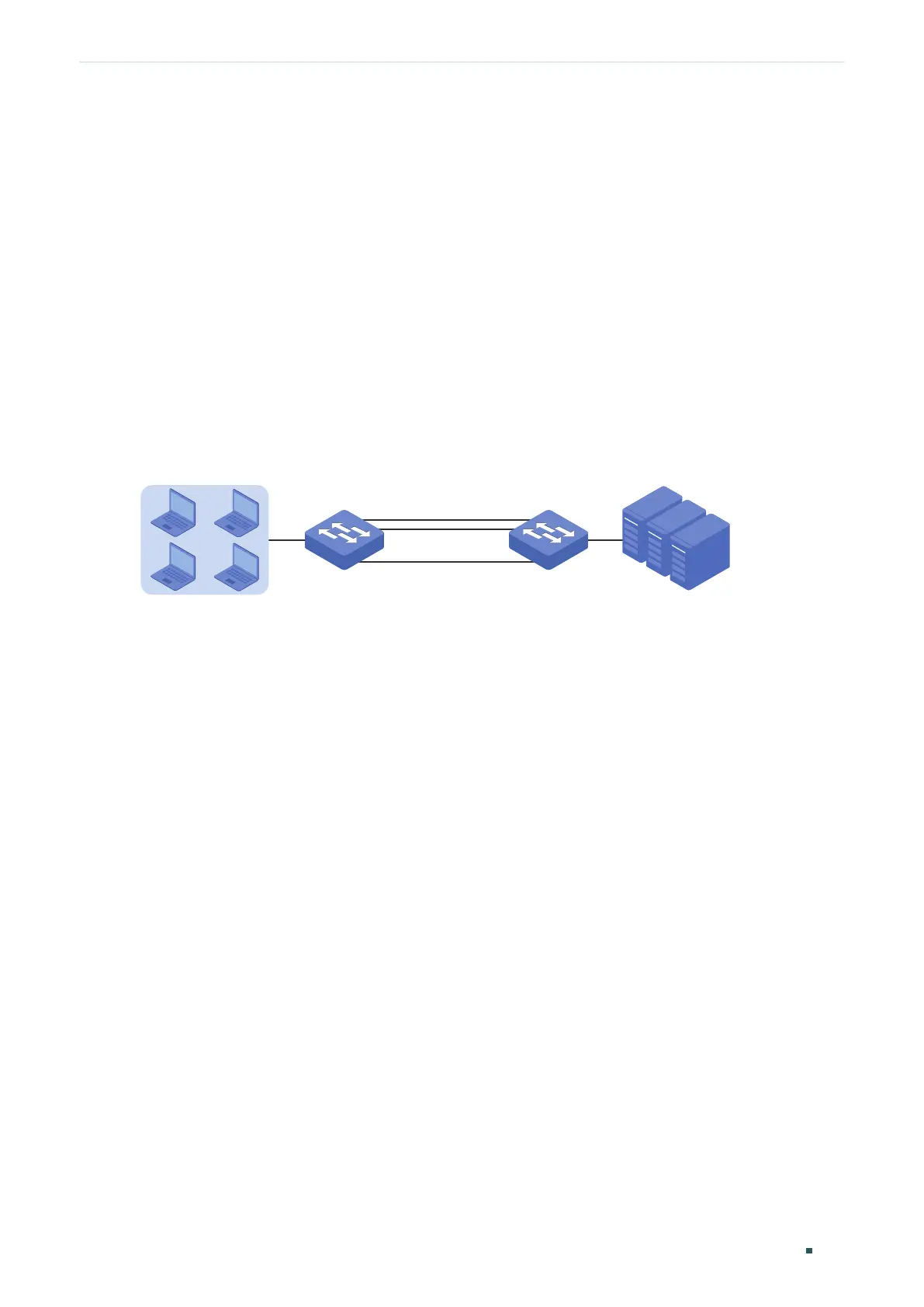User Guide 118
Configuring LAG Configuration Examples
3
Configuration Examples
3.1 Example for Static LAG
3.1.1 Network Requirements
As shown below, hosts and servers are connected to switch A and switch B, and heavy
traffic is transmitted between the two switches. To achieve high speed and reliability
of data transmission, users need to improve the bandwidth and redundancy of the link
between the two switches.
Figure 3-1 Network Topology
Switch A Switch B
Hosts
Gi1/0/1 Gi1/0/1
Gi1/0/8
.
.
.
Gi1/0/8
Servers
3.1.2 Configuration Scheme
LAG function can bundle multiple physical ports into one logical interface to increase
bandwidth and improve reliability. In this case we can configure static LAG to meet the
requirement.
The overview of the configuration is as follows:
1) Considering there are multiple devices on each end, configure the load-balancing
algorithm as ‘SRC MAC+DST MAC’.
2) Add ports 1/0/1-8 to a static LAG.
Demonstrated with T2600G-28TS, the following sections provide configuration procedure
in two ways: using the GUI and using the CLI.
3.1.3 Using the GUI
The configurations of switch A and switch B are similar. The following introductions take
switch A as an example.
1) Choose the menu L2 FEATURES > Switching > LAG > LAG Table to load the following
page. Select the hash algorithm as ‘SRC MAC+DST MAC’.

